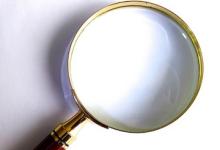Lupus Subgroup Responds to Anti-CD22 Save

The monoclonal antibody epratuzumab showed promise as a B-cell depleting agent in patients with concomitant systemic lupus erythematosus (SLE) and Sjogren's syndrome, a post-hoc analysis of two phase III trials found.
Among a subgroup of 112 patients who had SLE plus Sjogren's syndrome and who were positive for the autoantibody anti-SSa, responses on the British Isles Lupus Assessment Group (BILAG)-based Combined Lupus Assessment (BICLA) were observed in about 40%, compared with approximately 20% of those given placebo, according to Jacques-Eric Gottenberg, MD, PhD, of Strasbourg University Hospital in France, and colleagues.
Responses in the SLE/Sjogren's group were rapid -- apparent by week 16 and maintained through week 48 -- the investigators reported in Arthritis & Rheumatology.
B cells are central players in both SLE and Sjogren's syndrome, with some 20% of SLE patients also having Sjogren's. While SLE is characterized primarily by skin rash, arthritis, pleurisy, and nephritis, Sjogren's syndrome mainly manifests with sialadenitis, although it can also have systemic complications. Similar treatments have been used for the two conditions.
Epratuzumab targets the B-cell specific protein CD22, which is an inhibitory co-receptor of the B-cell receptor. "Binding of epratuzumab to CD22 does not kill the cells, but instead leads to removal of the B-cell receptor from the cell surface, and thus does not allow effective activation of the B cell," explained Kyriakos Kirou, MD, a rheumatologist at the Hospital for Special Surgery in New York City, who was not involved in the study but was asked for his perspective.
Epratuzumab was evaluated as a treatment for moderate-to-severe lupus in the yearlong multicenter EMBODY 1 and 2 studies, which included 1,584 patients. Participants were randomized to receive epratuzumab at 600 mg every week or 1,200 mg every other week, or placebo. There was no statistically significant difference at week 48 on the BICLA response rates between the active treatment and placebo, despite the fact that the number of circulating B cells was decreased by about 30% and IgM, by about 20%.
However, in an earlier open-label phase I/II trial that included 16 patients with primary Sjogren's syndrome, the use of epratuzumab was associated with decreases in B-cells and clinical responses.
Therefore, to explore the possibility that a subset of patients in the EMBODY trials who had both SLE and Sjogren's syndrome might have responded to epratuzumab, the investigators conducted an additional post-hoc analysis of 112 patients with both conditions and 1,329 who had SLE only.
Most clinical characteristics were similar in the subgroups with and without Sjogren's syndrome, although small differences were seen in age, sex, and serology.
As with the BICLA response, minimal differences were seen for changes on the BILAG among patients with SLE only, whereas by week 24, significantly greater reductions in total BILAG scores were observed in the SLE/Sjogren's group receiving epratuzumab.
Trends favoring epratuzumab also were seen for changes on the physician's global assessment and SLE Disease Activity Index in patients with SLE and associated Sjogren's syndrome.
Changes in serum levels of anti-SSA in patients with SLE plus Sjogren's syndrome were -51.24 units/mL for the 600 mg group and -84.45 units/mL for the 1,200 mg group compared with -26.83 units/mL for the placebo group. In contrast, no changes in these serologic markers were seen for patients with SLE only.
The safety profiles were similar for the active treatment and placebo groups.
It appears that the dysregulation of B cells differs in SLE and Sjogren's syndrome: "Although SLE and associated Sjogren's syndrome are both characterized by hyperactivated B cells, in Sjogren's syndrome, exocrine glands are the primary target for the disease, which is thought to be mediated by an antigen-driven, germinal center-type B cell response," the investigators wrote.
"Taken together, these data suggest that the pathophysiology of associated Sjogren's syndrome may differ from that in the wider SLE population."
Kirou called the study "very intriguing, because it potentially identifies a subpopulation of lupus patients -- namely those with associated Sjogren's syndrome, with increased sensitivity of B cells to anti-CD22 inhibition.
"This finding, if confirmed, may allow for a more patient-targeted approach when treating lupus, a notoriously heterogeneous disease," he said.
But "more epratuzumab studies are needed in patients with SLE and associated Sjogren's syndrome before we can conclude that this treatment is effective in this subgroup of patients."
Limitations of the study, Gottenberg and colleagues said, included its reliance on clinical assessment rather than objective testing for the diagnosis of Sjogren's syndrome and the fact that the analysis included a relatively small number of patients with SLE plus Sjogren's syndrome.
The study was supported by UCB Pharma.
The authors reported financial relationships with UCB, Biogen, Bristol-Myers Squibb, GlaxoSmithKline, LFB, Pfizer, MedImmune, Merck Serono, and Parexel. Several co-authors were employees of UCB.








If you are a health practitioner, you may Login/Register to comment.
Due to the nature of these comment forums, only health practitioners are allowed to comment at this time.